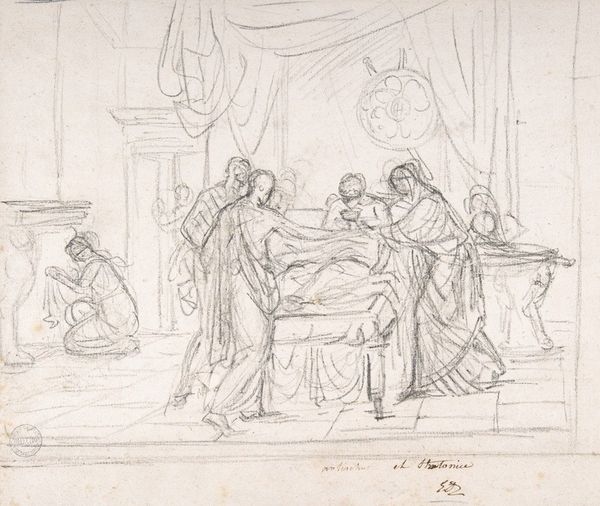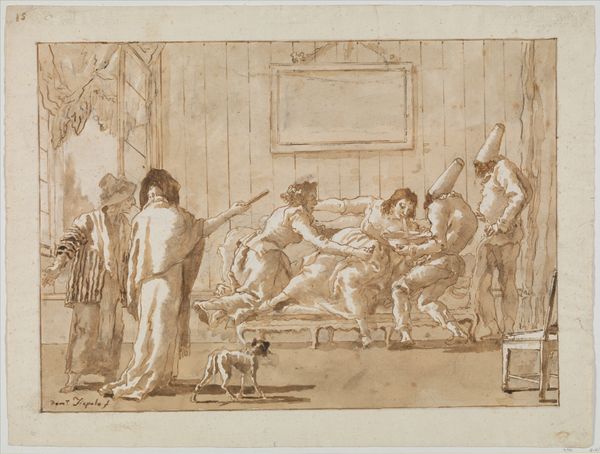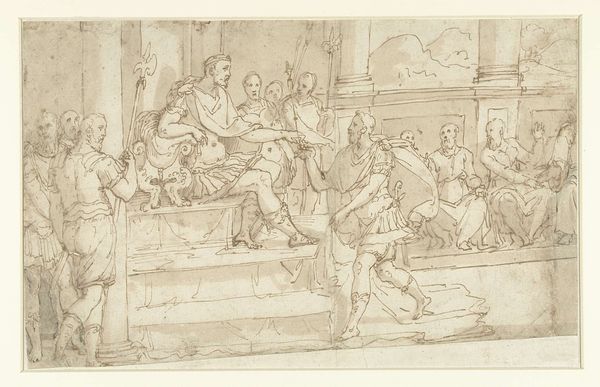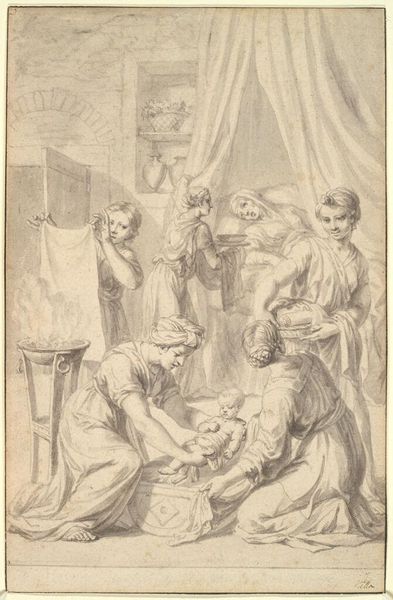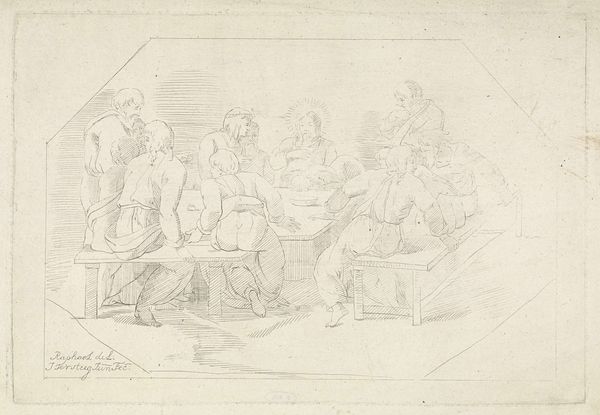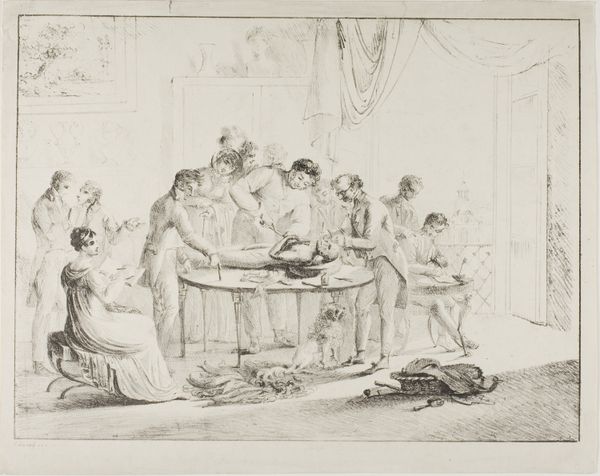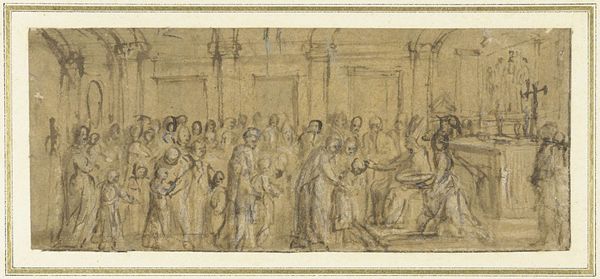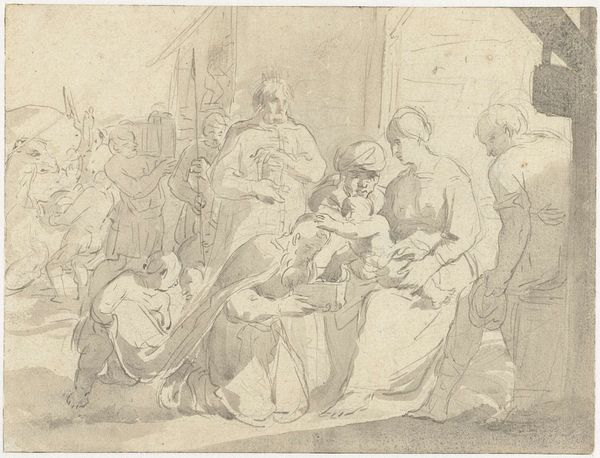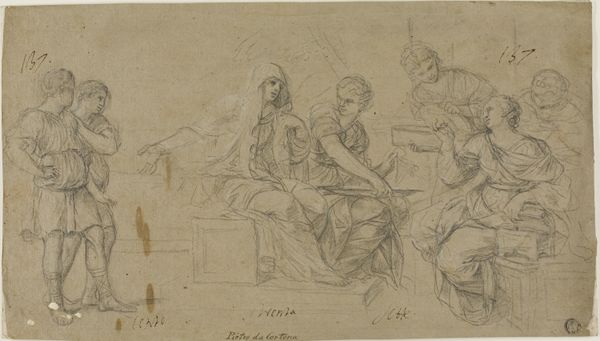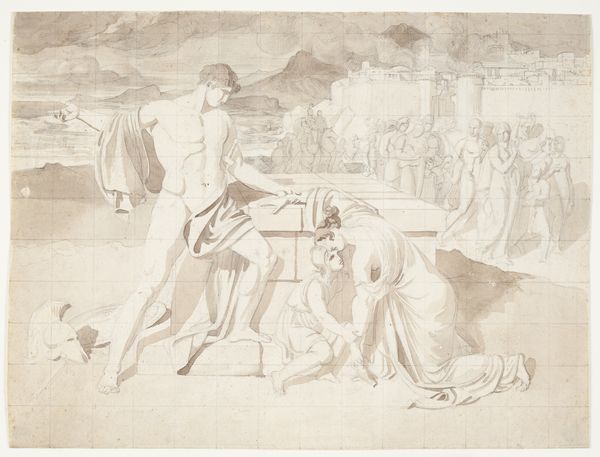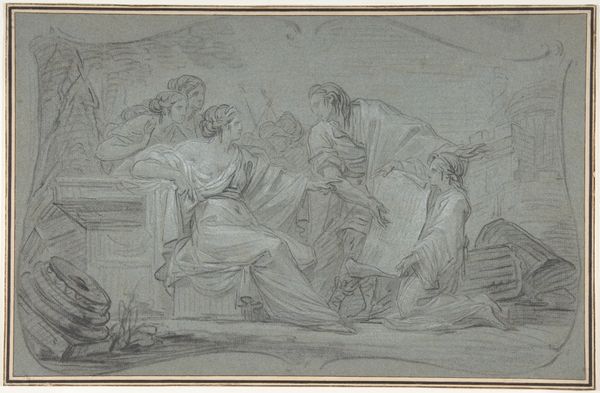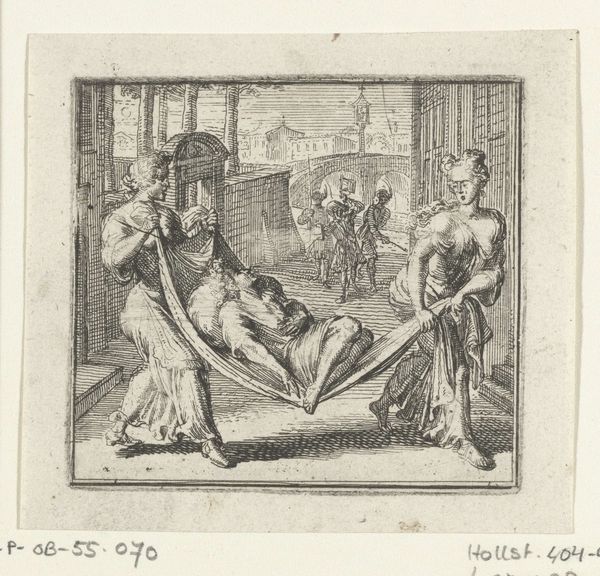
drawing, paper, pencil
#
portrait
#
drawing
#
neoclacissism
#
pencil sketch
#
figuration
#
paper
#
pencil
#
line
#
history-painting
#
academic-art
Dimensions: height 190 mm, width 262 mm
Copyright: Rijks Museum: Open Domain
Editor: This delicate pencil sketch is entitled "Bride and Groom Entering a Bridal Chamber," created by Angelica Kauffmann sometime between 1751 and 1807. I'm struck by the neoclassical style and how it depicts this very intimate scene in such a formal, almost staged manner. How do you see this work in its historical context? Curator: That's a perceptive observation about the staged formality. Kauffmann, though a woman, achieved enormous success within the 18th-century art world which, of course, was a profoundly patriarchal structure. Consider the grand tour; young, upper-class men were afforded the cultural capital of studying antiquity in Italy. How do you see this artwork functioning within the Neoclassical movement and that larger, very gendered context? Editor: It feels almost subversive, in a quiet way. A woman artist focusing on a private, domestic scene within a movement that was largely dominated by men depicting heroic, public subjects… It reframes the very idea of what’s important or worthy of artistic representation. Curator: Exactly! The marriage chamber, rather than the battlefield. And, significantly, consider Kauffmann’s biography. She painted numerous self-portraits, actively shaping her public image. This sketch, therefore, could be viewed through the lens of Kauffmann asserting her own agency, selecting the stories she wanted to tell and challenging the prevailing artistic hierarchy. Editor: So it's not just a record of a historical moment, but a statement on the role of women in society and art. Curator: Precisely. Think of how academic art often reinforced power structures, especially by portraying women through limited archetypes. Kauffmann offers a different perspective. Are there any elements of the sketch’s composition that you believe contributes to that sense of intimacy despite its grand, classical aesthetic? Editor: Maybe the close proximity of the figures and the focus on small details, like the bride's hand being guided by the groom, or the figures tending to the bed... Those details seem to humanize these figures taken from classical history or mythology. Curator: A fantastic observation! These seemingly small gestures do indeed center intimacy within a formal neoclassical style. So, understanding this pencil sketch means appreciating not only its aesthetics, but its position within complex social and artistic hierarchies. Editor: I see that so clearly now, thinking about who made the art, and the power dynamics it engages with really opens it up.
Comments
No comments
Be the first to comment and join the conversation on the ultimate creative platform.
